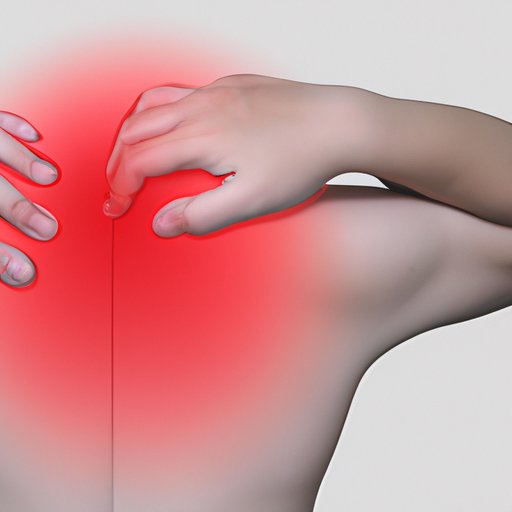
I. Introduction
A herniated disc, also known as a slipped or ruptured disc, occurs when the soft, gel-like center of a spinal disc pushes through a crack in the tougher exterior casing of the disc.
Seeking treatment for a herniated disc is crucial since it can cause severe pain and potentially long-term complications.
II. The Causes and Symptoms of Herniated Discs
A herniated disc often results from natural wear and tear on the spine that occurs as a person ages. In some cases, it can also be caused by a sudden, traumatic injury.
Common symptoms of a herniated disc include:
- Low back pain
- Numbness or tingling in the legs or feet
- Difficulty walking or standing
- Loss of bladder control (in rare cases)
III. 10 Effective Exercises to Alleviate the Pain of Your Herniated Disc
Physical activity and exercise can help those with a herniated disc manage their pain and improve their overall quality of life. Here are 10 exercises that may help:
- Walking
- Bridges
- Partial crunches
- Single-leg knee-to-chest stretches
- Hamstring stretches
- Wall sits
- Press ups
- Bird dogs
- Cat-cow stretches
- Pelvic tilts
It’s important to consult with a healthcare professional before starting any exercise program, especially if you have a herniated disc. Here are a few safety tips for those with a herniated disc when exercising:
- Avoid exercises that involve twisting or bending forward
- Stick to low-impact exercises that do not jar the spine
- Do not overdo it – start slowly and gradually increase the intensity and duration of your workout
- Listen to your body and stop if you experience any pain or discomfort
IV. 7 Non-Surgical Ways to Treat Your Herniated Disc
In addition to exercise, there are several non-surgical treatment options that can help alleviate the pain associated with a herniated disc:
- Physical therapy
- Chiropractic care
- Acupuncture
- Massage therapy
- Spinal decompression therapy
- Cold and hot therapy
- Over-the-counter pain medications
Each treatment option has its own set of potential benefits and risks, so it’s important to consult with a healthcare professional to determine which treatment is best for you.
V. How to Modify Your Daily Routine When You Have a Herniated Disc
Modifying your daily routine can help prevent further injury to your herniated disc and manage your pain. Here are a few tips:
- Avoid sitting for prolonged periods
- Take frequent breaks and stretch throughout the day
- Practice good posture and ergonomics
- Modify your sleeping position to reduce pressure on your back
- Avoid carrying heavy loads or lifting heavy objects
Here are some specific modifications you can make to your work, sleep, and exercise routines:
- At work – use an ergonomic chair and desk and take frequent breaks to stand and stretch
- When sleeping – sleep on your side with a pillow between your knees or on your back with a pillow under your knees
- When exercising – focus on low-impact exercises that do not jar the spine and work with a trained professional to develop a safe exercise plan
VI. When Surgery May Be Necessary to Fix Your Herniated Disc
In some cases, surgery may be the only option for treating a herniated disc. This is typically reserved for individuals who have persistent pain that does not respond to non-surgical treatments.
There are several surgical options for treating a herniated disc, including:
- Microdiscectomy
- Laminectomy
- Spinal fusion
- Artificial disc replacement
It’s important to understand the potential risks and benefits associated with each surgical option before making a decision. A healthcare professional can help guide you through this process.
VII. Conclusion
There are several ways to manage the pain associated with a herniated disc, including exercise, non-surgical treatments, and surgery. It’s important to seek medical attention and work with a healthcare professional to determine which treatment option is best for you. By making modifications to your daily routine and incorporating safe exercise practices, you can help alleviate your pain and prevent further injury to your herniated disc.
If you are experiencing any symptoms associated with a herniated disc, such as persistent back pain or numbness in your legs, it’s important to seek medical attention as soon as possible.




